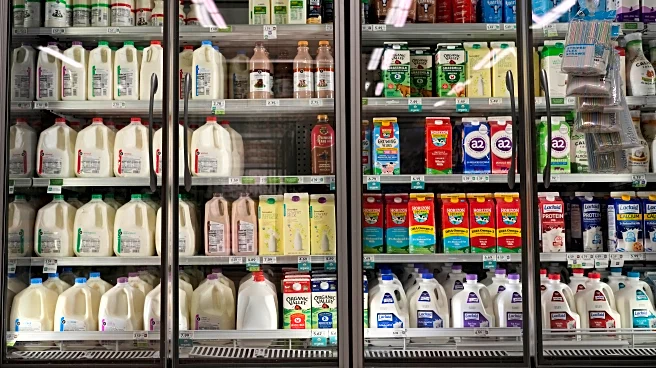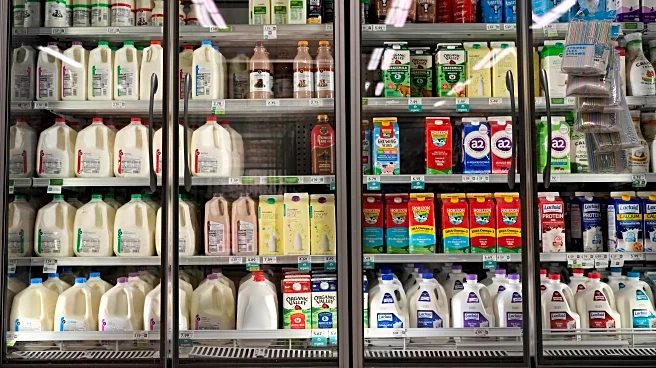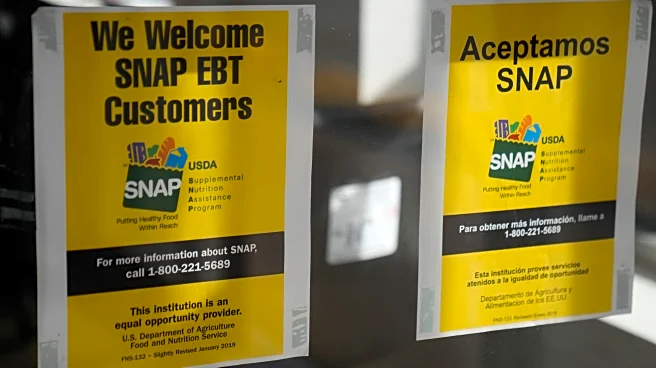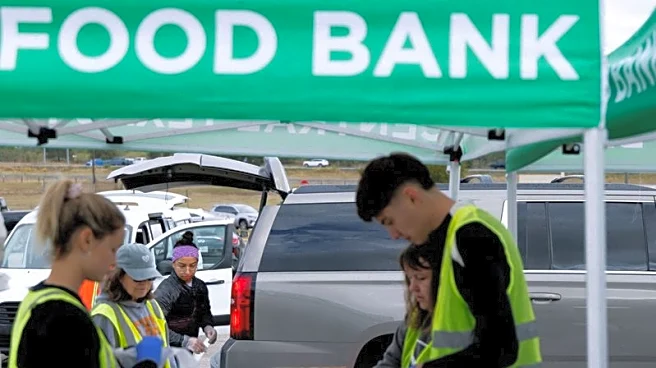What's Happening?
The Trump administration has announced plans to use the Supplemental Nutrition Assistance Program (SNAP) contingency fund to provide partial food stamp benefits during the ongoing government shutdown.
According to Patrick Penn, a Department of Agriculture official, the administration intends to deplete the $4.6 billion contingency fund to cover 50% of eligible households' current allotments for November 2025. This decision follows a federal court order requiring the administration to use the funds to address the lapse in SNAP funding caused by the shutdown. The shutdown, now in its 34th day, has left more than 42 million Americans who rely on SNAP without full benefits. The administration's move comes amid legal challenges from states and advocacy groups demanding the use of contingency funds to ensure food aid continues.
Why It's Important?
The decision to use the SNAP contingency fund highlights the severe impact of the government shutdown on essential services. With over 42 million Americans dependent on SNAP for food security, the partial benefits could lead to significant hardship for many families. The legal battles underscore the tension between the administration and states over the management of federal aid during the shutdown. The situation also reflects broader political disagreements, as the administration blames congressional Democrats for the funding lapse. The outcome of these legal and political disputes could set precedents for how contingency funds are used in future government shutdowns, affecting millions of Americans who rely on federal assistance programs.
What's Next?
The administration has been ordered to ensure that partial payments are not delayed beyond Wednesday. However, the process of adjusting state eligibility systems to accommodate reduced payments may lead to errors and delays. States and advocacy groups are likely to continue legal actions to secure full funding for SNAP benefits. The ongoing shutdown, poised to become the longest in U.S. history, adds pressure on lawmakers to reach a spending agreement. The resolution of this issue will be closely watched by stakeholders, including state governments, advocacy groups, and SNAP recipients, as it will determine the immediate and long-term availability of food aid.













